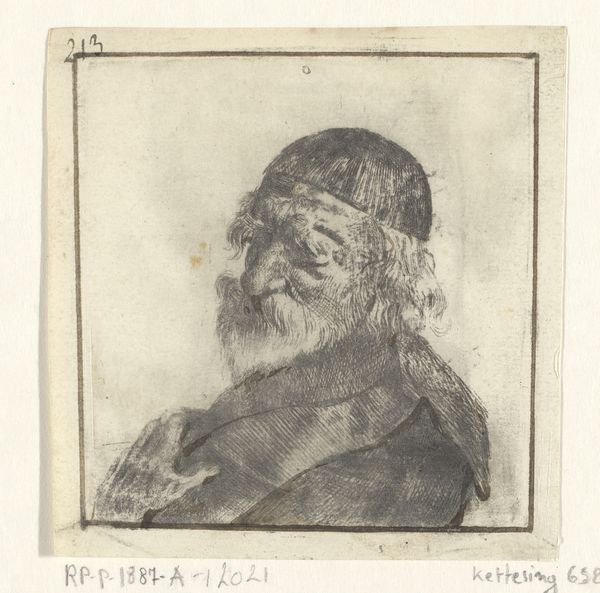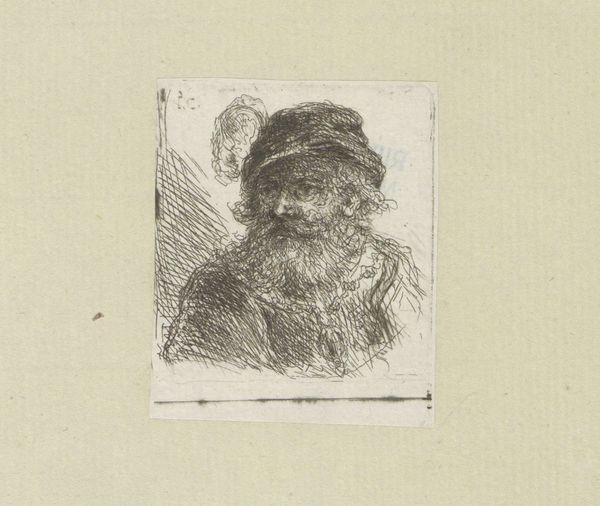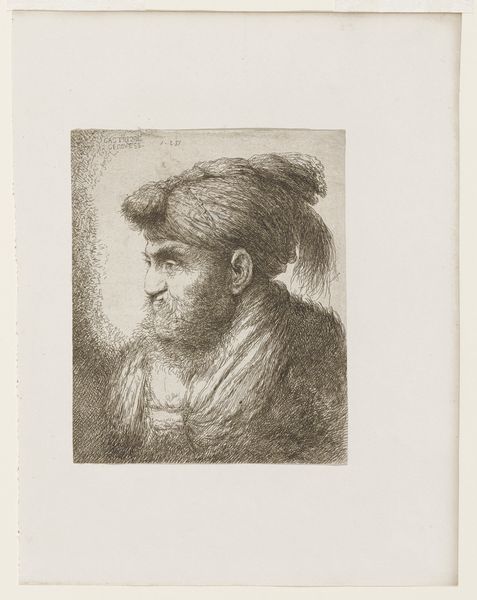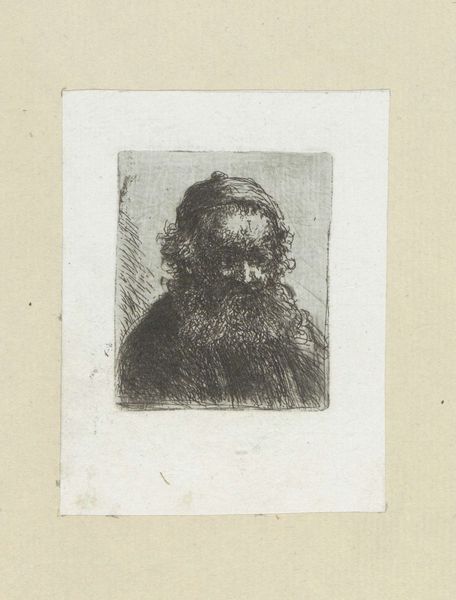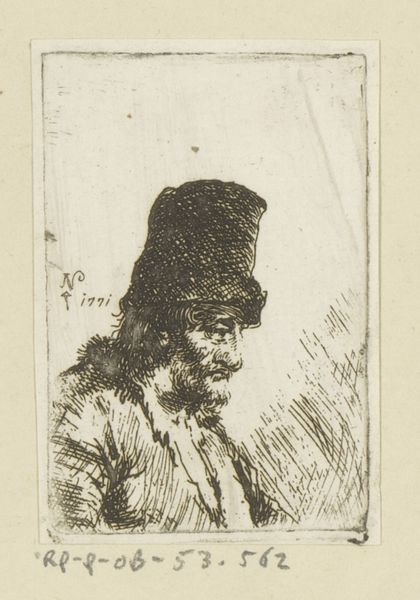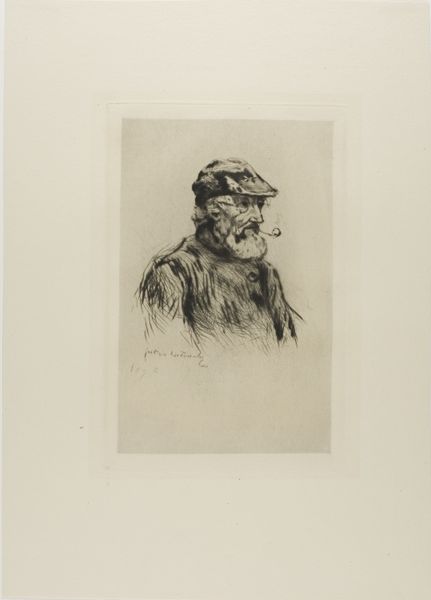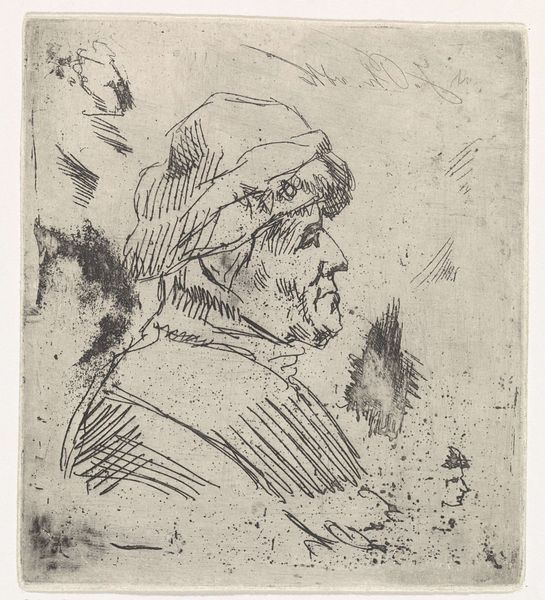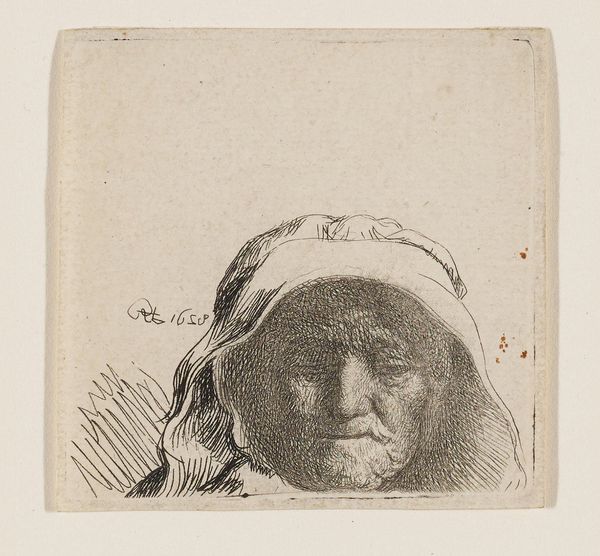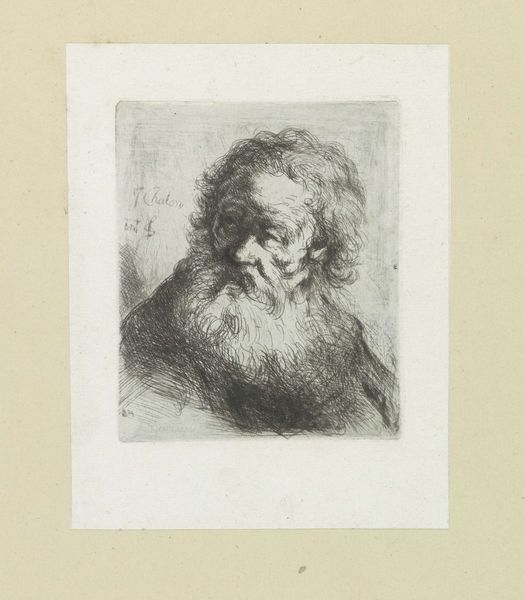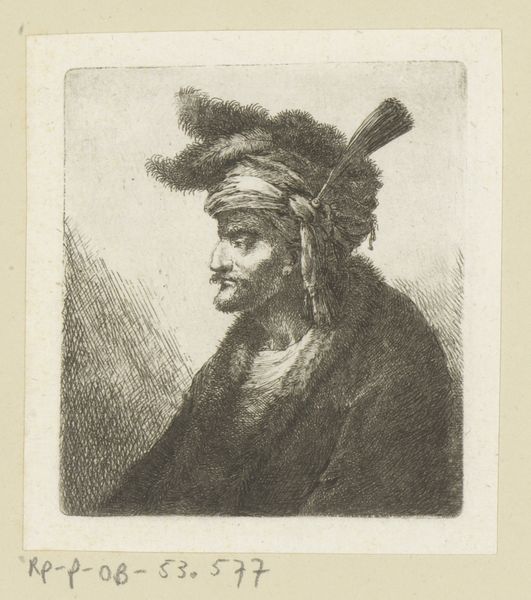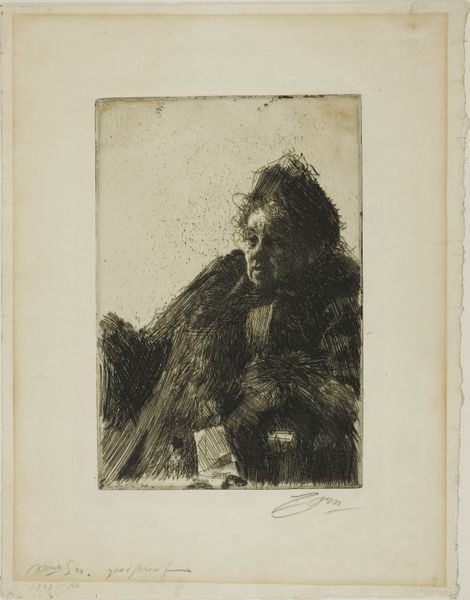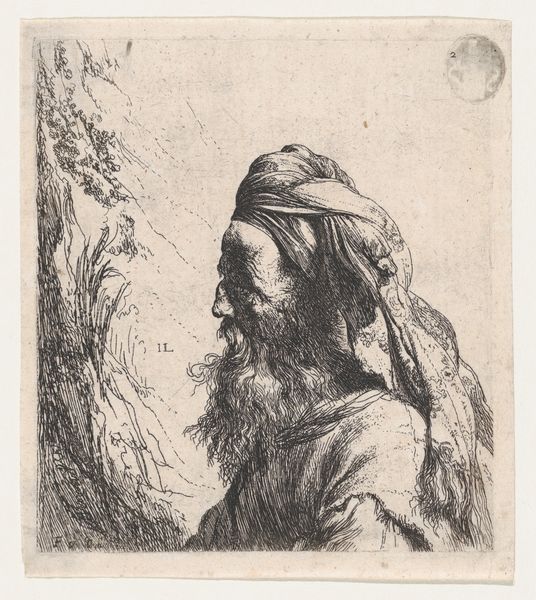
Dimensions: height 45 mm, width 36 mm
Copyright: Rijks Museum: Open Domain
Editor: Here we have "Beggar man and woman behind a bank," an etching by David Deuchar, created sometime between 1753 and 1808. The rawness of the etched lines makes the figures quite striking, almost desperate. What do you see in terms of how this piece reflects its social context? Curator: As a print, this work inherently speaks to its means of production and potential distribution. Etchings allowed for a relatively inexpensive reproduction, broadening access to imagery beyond the elite. The choice of subject – beggars – further implicates the artist within a social critique. Was Deuchar commenting on the growing disparities within 18th century society? Editor: That's fascinating. The line work itself seems hurried, lending to a feeling of urgency. How does that contribute to your interpretation of social commentary? Curator: The immediacy of the etching process, with its direct link between the artist’s hand and the final print, conveys a certain authenticity. Deuchar isn't creating a highly polished, idealized image of poverty. He's using a relatively accessible medium to present a perhaps uncomfortable reality. Consider, too, where these prints might have circulated: in portfolios of amateur artists, amongst a growing middle class interested in collecting images of all social strata. What does that consumption tell us about their attitudes? Editor: So, it's less about the specific scene depicted and more about how the production and consumption of the print reflect the economic and social dynamics of the time? Curator: Exactly. We see art intersecting with labor, material accessibility, and, ultimately, consumer culture. The choice of etching – a less precious, more easily reproducible medium – for a subject like poverty, elevates a discussion around social class and material conditions that traditional portraiture wouldn't address. Editor: That definitely shifts my understanding. It's not just a depiction; it's actively part of the social fabric of the time. Curator: Indeed. Analyzing the means of production and circulation offers us insight into both the artist’s intent and the artwork’s place within a wider network of social and economic exchanges.
Comments
No comments
Be the first to comment and join the conversation on the ultimate creative platform.
